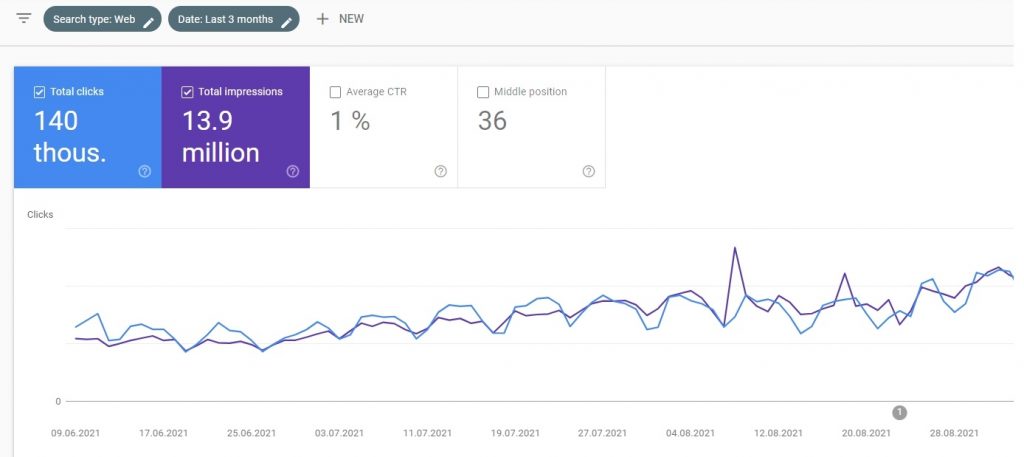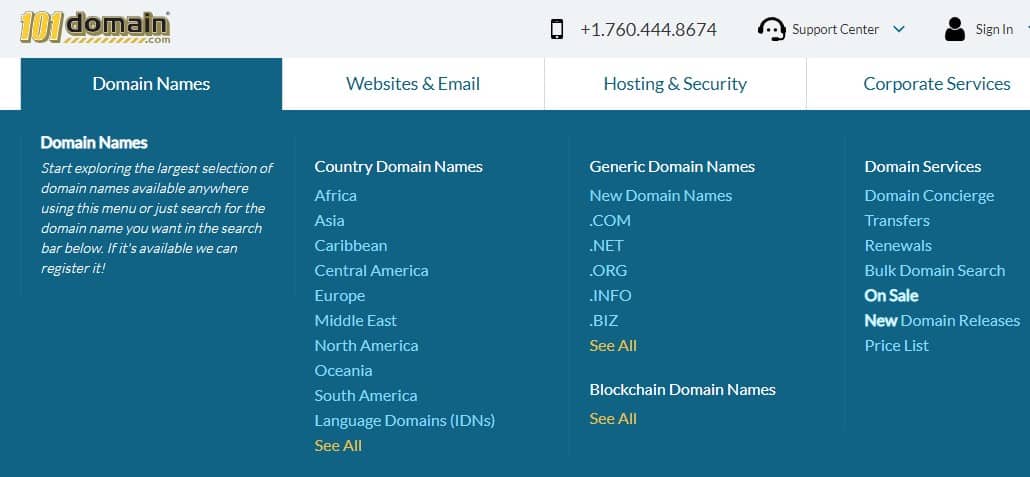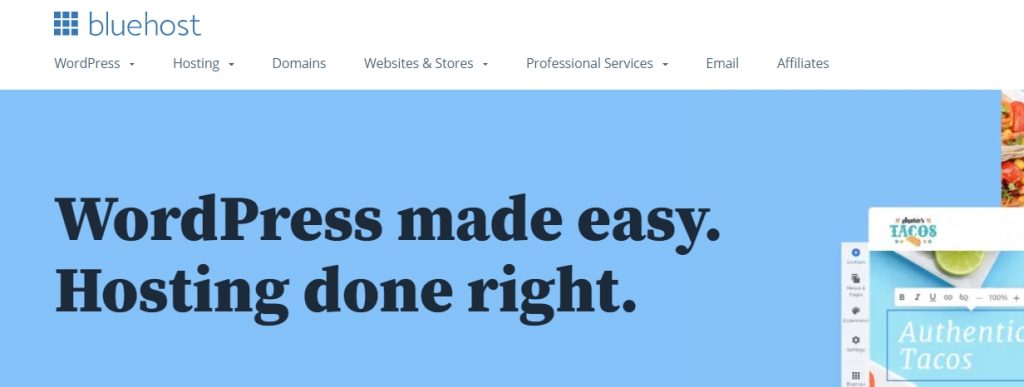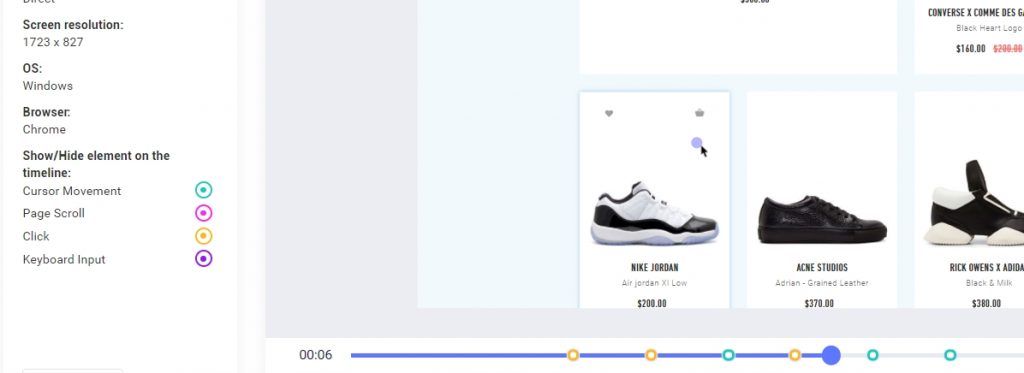Онлайн-шоппинг в 2021 году, богатом на карантины и локдауны, еще прочнее вошел в нашу жизнь. Все больше компаний вкладывают усилия и финансы в развитие интернет-магазинов, создавая удобный и практичный функционал для покупателей. Чтобы понять размах, давайте взглянем на занимательную статистику 2021 года о покупках в Интернете.
Часто задаваемые вопросы от потенциальных владельцев интернет-магазина:
- Как открыть интернет магазин одежды без вложений?
- Как открыть интернет магазин в инстаграм?
- Можно открыть сразу большой интернет-магазин техники?
- В каких нишах уже поздно открывать интернет-магазин?
- Сколько нужно денег на продвижене нового интернет-магазина после открытия?
Топ-8 фактов выглядит так:
- 63% покупок совершаются в Интернете — сюда включен поиск товара перед покупкой в офлайн-магазине.
- Более 50% потребителей делают больше покупок с помощью мобильного.
- Китайская веб-платформа Taobao занимает первое место как онлайн-рынок, Tmall и Amazon следуют за ней.
- 44,5% покупателей оплачивают свои покупки с помощью цифровых кошельков, среди которых Apple Pay, Samsung Pay, Google Pay и PayPal.
- В 2020 году 42% покупали не реже одного раза в неделю, а это на 22% больше, чем 2 года назад. Это, в свою очередь, повысило уровень покупок на Amazon на 50%.
- 75% поисковых запросов совершенно новые.
- 49% покупателей бросают корзины, покидая веб-страницы, по причине высоких затрат на доставку и налоги.
- К концу 2021 года количество онлайн-покупателей возрастет до 2,14 миллиарда человек по всему миру. А продажи электронных устройств взлетят до 4,891 триллиона долларов. Более того, к 2024 году эта цифра достигнет 6,4 триллиона.
Как видно, онлайн-магазины активно набирают популярность. И такая тенденция сохранится.
Выбор прибыльной ниши

Необходимость выбрать одну нишу для деятельности обусловлена качеством последующей работы. Чем лучше вы сосредоточитесь на чем-то одном, тем результативнее будет развиваться бизнес. Определится с профессиональным направлением вам помогут следующие советы:
- Чем вы увлекаетесь? Чем интересуетесь каждый день? Если вы будете заниматься тем, что любите, вам будет проще открыть интернет-магазин и продвигать его со знанием дела.
- Выберите 5 основных направлений и тщательно изучите их. Думайте не о продукте, а о сфере. К примеру, популярность розовых панам с синими перьями пройдет через сезон-два, а головные уборы как таковые останутся востребованными всегда.
- Узнайте прибыльность ниши – не все, что нравится, будет приносить хороший доход. Изучите рынок и отберите действительно выгодные сегменты.
- Проанализируйте тенденции. Полезно исследовать как прошлые, так и настоящие. Обратите внимание на наиболее стабильные ниши, которые не прогорают после снижения популярности товара или услуги.
- Какую проблему решает ниша? Каким образом? Узнайте детали, проанализируйте и найдите свое решение — это сделает ваш интернет-магазин действительно полезным.
- Заранее найдите достаточное количество товаров для своей сферы. Отличный способ — зайти на сайт Amazon (или подобные) и посмотреть бестселлеры этого направления.
- Оцените, готова ли целевая аудитория платить за предложенный вами товар. Проанализируйте будущих конкурентов. К примеру, проверьте наличие отзывов. Какие они?
- Изучите соперников и конкурентов. Подумайте: что они упустили? И что полезного из их опыта можно перенять.
- Поищите рекламу выбранной ниши. Если веб-сайтов с рекламой вашего продукта много – скорее всего, направление прибыльное.
Следуя этому плану, вы найдете сферу для создания своего интернет-магазина, который будет приносить стабильный доход.
Выберите подходящую бизнес-модель для своего онлайн-бизнеса

Чтобы ваш интернет-магазин функционировал правильно, необходимо определиться с бизнес-моделью. Всего их четыре — B2B, B2C, C2C и C2B. Разберемся подробнее:
- B2B — бизнес для бизнеса. Модель, когда бизнес продает товар/услугу другому бизнесу. Как правило, тут покупатель не является конечным потребителем.
- B2C — бизнес для потребителя. Наиболее распространенная бизнес-модель, при которой товар попадает сразу к конечному потребителю.
- C2C — потребитель для потребителя. Проще говоря, это онлайн-рынок, где продавцы и покупатели – не предприниматели. Хороший пример — интернет магазин объявлений Craigslist и онлайн-аукцион eBay.
- C2B — потребитель для бизнеса. По сути, это вариант, когда индивидуальные предприниматели предоставляют услуги/товары более крупному бизнесу. Пример такого бизнеса — Upwork.
Для традиционного онлайн-магазина наиболее подходящая модель — B2C. Для создания онлайн-рынка с отдельными продавцами — C2C. Второй вариант сложнее, но практика показывает, что он также достаточно успешен.
Создайте бизнес-план

Бизнес-план – основа всего. Это возможность все предварительно рассчитать и предусмотреть. И быть уверенным в правильности дальнейшего построения бизнеса. И что не менее важно — привлечь интересы других бизнесменов. Хороший бизнес-план позволит заинтересовать возможных фундаторов, партнеров, квалифицированных сотрудников и партнерские предприятия. Детально продуманный бизнес-план состоит из следующих пунктов:
- Резюме. Оно включает в себя цели и задачи стартапа, а именно: краткое описание товаров, цели магазина, описание рынка, аргументирование жизнеспособности онлайн-магазина (дополнительно можно провести анализ достоинств вас и ваших конкурентов), потенциал роста компании, а также описание потребностей финансирования.
- Подробный обзор интернет-магазина и приоритетов бизнеса. Сюда стоит включить информацию о том, какой товар вы предоставляете, что вам нужно для его популяризации. Кто будет заниматься обслуживанием/поставкой товара и кто ваши потенциальные клиенты.
- Описание товара. Опишите его особенности, не забудьте об авторских правах (если они есть), а также необходимости товара на рынке, если он редкий.
- Возможности рынка. Проанализируйте и опишите его емкость. Сюда уместно включить исследования — обзор рынка, потребности, тренды, описание потенциальных покупателей.
- Конкурентное преимущество. Поведайте о потенциальных, возможных конкурентах, вашем преимуществе, возможностях и рисках.
- Финансовый анализ. Составьте прогнозы, которые помогут оценить потенциал компании.
В качестве примера бизнес-плана для интернет-магазина можно использовать данный шаблон.
Зарегистрируйте свое доменное имя

Цель доменного имени – легкая идентификация вашего интернет магазина. Для интернет-магазина это особенно важно. Выбор доменного имени может потребовать времени, но это старт работы вашего интернет-бизнеса. Регистрация собственного домена проходит в 5 этапов:
- Выберите доменное имя верхнего и нижнего уровня. Нижний предпочтительнее создать из названия компании, а верхний — «.com», поскольку он более узнаваем. К примеру, «roadofstars.com». Не забудьте проверить его доступность.
- Купите доменное имя у регистратора. Он же может обслуживать ваш интернет магазин. Но имейте в виду, что вам не обязательно размещать веб-сайт там, где было куплено доменное имя.
- Определитесь со сроком регистрации. Возможно, в дальнейшем вы захотите перейти на обслуживание другого регистратора.
- Настройте веб-хостинг. Для этого выберите тип и компанию, которая предоставит вам услугу веб-хостинга.
- Создайте интернет-магазин. Большинство веб-хостингов поддерживают конструкторы WordPress.com, Wix, Weebly, Squarespace, Shopify. Подробнее о них можно узнать у регистратора или из статьи.
Важнейший этап — выбор веб-хостинга. Как это сделать правильно?
Выберите услугу веб-хостинга

Это ключевой момент старта интернет-бизнеса. Хороший веб-хостинг нужен каждому интернет магазину – именно он обеспечит бесперебойную работу вашего интернет-магазина. Чтобы определиться с хостером, обусловьте несколько моментов:
- Определите нагрузку и потребности веб-сайта. От того, какое количество человек будет посещать ваш веб-ресурс, и от его функций зависит тип предоставляемых вам услуг и пропускная способность сервера.
- Подумайте об объединении веб-хостинга и конструктора. Некоторые хостеры или компании по созданию веб-страниц предоставляют эти услуги в сочетании.
- Проанализируйте условия. Сравните стоимость, технические требования вашего интернет-магазина, простоту управления и удобство, качество службы поддержки (некоторые веб-ресурсы нуждаются в техподдержке 24/7), а также политику отмены.
Также не помешает рассмотреть топ-10 веб-хостингов:
- HostGator;
- InMotion;
- DreamHost;
- Bluehost;
- A2;
- AccuWeb Hosting;
- Hostwinds;
- Liquid Web Hosting;
- WP Engine;
- GoDaddy.
И тут мы подходим к еще одному важному этапу — выбору типа веб-хостинга из огромного перечня компаний. Детальнее – ниже.
Типы веб-хостинга
Сразу стоит отметить, что такие веб-ресурсы как Shopify і Bigcommerce не нуждаются в сервере, поскольку они имеют собственное портфолио и базу данных. Для остальных на выбор есть такие веб-хостинги:
- Shared. Вариант для небольших или средних интернет магазинов.
- VPS. Виртуальный сервер, который отлично подходит для быстро растущих интернет-магазинов. Он включает в себя хранилище с высокоскоростными SSD, услуги мониторинга, безопасности.
- Dedicated. Он необходим высокопроизводительным веб-сайтам, требующим отдельного сервера. Этот тип веб-хостинга включает в себя такие функции как автоматическую миграцию и резервное копирование, выделенные IP-адреса и выбор операционной системы. Единственный недостаток – цена, первоклассный сервис обходится недешево.
Каждый из типов веб-хостинга предназначен для сайтов разных размеров – проанализируйте возможности и потребности своего интернет-магазина. Так, к примеру, если в течение года ожидаете не более 1000 посетителей в день, выбирайте более дешевый сервер за 10–20 евро в месяц. Или Shopify, где хостинг включен в стоимость. Все эти усилия – залог бесперебойной работы.
Выберите платформу электронной коммерции
Интернет-магазин отличается возможностями и функциональностью от обычного веб-сайта, поэтому важно подобрать для него отдельную электронную коммерческую платформу. Давайте коротко рассмотрим наиболее популярные.
Shopify

Специфика данной веб-платформы — для нее не нужен отдельный сервер, поскольку Shopify имеет свои сервера. Особенности платформы:
- Темы Shopify отлично адаптируются под мобильную версию веб-сайта.
- Наличие у торговой площадки экспертов. Вы найдете специалистов, которые займутся поддержкой, SEO, настройкой магазина, визуальным контентом и т.д.
- Осуществляет работу по всему миру.
- Среди компаний, которые пользуются Shopify, — Cee Cee`s Closet, Nalata, Neso, Tokyobike, Kirrin Finch, Coco and Breezy, Brooklyn Museum, Adore Me.
Вы получаете помощь на каждом этапе создания и работы интернет-магазина и хорошие возможности для его развития.
BigCommerce

Так же, как и Shopify, веб-платформа не требует сервера, поскольку у нее есть собственные. К другим особенностям относятся:
- Имеет конструктор магазинов, в котором можно выбрать и настроить дизайн под стиль компании.
- Позволяет продавать на других интернет-магазинах, включая социальные сети (Facebook, Pinterest и Instagram), а также торговые площадки (eBay, Amazon и Google Shopping).
- Поддерживает десятки электронных кошельков, в том числе Apple Pay, Amazon Pay, PayPal One Touch.
Кроме того, у веб-платформы есть отдельные программы работы для В2В. Преимущества веб-платформы оценили такие компании как: Black Diamond Equipment, Peter Christian, Tommie Copper, Davidoff of Geneva, Clarks, Kelty, Gillette On Demand и Fujitsu.
Magento

Является продуктом Adobe Commerce и представляет собой платформу CMS, которую необходимо отдельно устанавливать на сервер. Помимо основных функций также предоставляет:
- Возможность анализировать предпочтения покупателей. Magento показывает, последние просмотренные и добавленные в корзину товары.
- Функцию системного управления каталогом.
- Устойчивость к вирусам. Кроме этого, страницы интернет-магазинов быстро подгружаются.
Всемирная партнерская система Magento обеспечивает работу клиентов с учетом современных тенденций, поэтому ее клиентами являются такие компании — HP, Prediger, Högl, Asus, Paul Smith, Lladró, Amped.
WooCommerce

Настраиваемый плагин работает на основе WordPress. Имеет следующие особенности:
- Позволяет настроить рекламу и коммуницировать с клиентами в Facebook и Google.
- Легко импортируйте свой продукт с веб-сайта Amazon на WooCommerce.
- Демонстрирует статистику интернет-магазина в режиме реального времени.
WooCommerce расширяется и предоставляет обучение по всему миру. Благодаря возможностям плагина свои интернет магазины развили или расширили такие компании: Wildlabs, Bang On Books, VerifyWP, Nuria Beauty, All Blacks Shop, Brown Brothers и Yoast.com.
Каждый бизнес обладает своими особенностями, выбирать электронную коммерческую веб-платформу стоит исходя из размеров магазина и планов развития.
Привлечение покупателей

Продумайте, как и чем привлечь покупателей, — изучите действия успешных конкурентов. Проанализируйте, какие методы работают в вашей нише. В частности обратите внимание на следующие возможности вовлечь большее количество людей:
- Создавайте и тщательно анализируйте контент. Даже для интернет-магазина полезно иметь небольшой блог с практичными статьями. Также обеспечьте привлекательную визуализацию, делайте опросы.
- Используйте соцсети. Настройте рекламу, обеспечьте регулярные публикации и активно общайтесь с подписчиками.
- Сделайте email-рассылку. Для этого предусмотрите в интернет-магазине возможность быстрой регистрации.
- Устройте пресс-событие, напишите релиз или закажите новость в популярном журнале. Так вы охватите большое количество новых людей.
- Порадуйте покупателей скидками. Распродажи, купоны, бонусы — кто такое не любит?
- Привлекайте к процессу продажи собственных друзей через соцсети.
- Делайте опросы качества. Побудите покупателей высказаться о качестве сервиса или предложить новшества — это располагает людей и помогает вам увидеть, в чем можно улучшиться.
Простые, но работающие методы привлекут потенциальных покупателей и обеспечат добрую молву о вас.
Аналитика посещений и продаж
Для построения бесперебойной и налаженной работы веб-сайта важно вовремя анализировать трафик и устранять недочеты. В этом помогут сервис Google Analytics и инструменты Plerdy. В чем заключаются их функции?
Google Analytics позволяет ближе познакомиться с клиентами. А именно:
- Анализировать Google Ads и узнать, какие компании наиболее эффективны.
- Получить данные страниц, которые пользуются спросом и которые покидают.
- Присоединить электронную торговлю, чтобы видеть конверсии.
- Анализировать каналы трафика и определить, какой дает больше прибыли.
Компания Plerdy предлагает несколько полезных инструментов для владельцев интернет-магазинов, каждый из которых выполняет свою задачу.
Plerdy Heatmap

Представляет собой набор инструментов для отслеживания действий пользователей на сайте. Он показывает:
- Клики.
- Прокрутку веб-страницы.
- Места, на которых покупатели задерживают внимание.
Heatmap расскажет вам об интересах ваших посетителях, покажет преимущества интернет-магазина и его недостатки.
PopUP Forms and Net Promoter Score

Позволяет настроить своевременное появление всплывающих окон на нужных страницах без привлечения программистов и дизайнеров. Возможности использования:
- Целевое информирование посетителей о скидках и акциях.
- Форма с предложением сделать заказ в один клик или получить обратный звонок.
Хорошие предложения в динамических формах удерживают покупателей на веб-страницах. Помните, что 75% пользователей как правило не возвращаются на страницю.
SEO Checker

Помогает анализировать SEO веб-сайта, семантику согласно алгоритмам, а также исследовать качество работы интернет-магазина на мобильной и ПК-версиях. Инструмент маркетологов для SEO-оптимизации интернет-магазинов и сайтов.
Session Replay

Вся запись действий в интернет-магазине ведется в режиме реального времени, как и в Heatmap, что позволяет просмотреть ее, составить «профиль покупателя» и узнать достоинства и минусы UX-дизайна.
Event Tracking

Инструмент синхронизирует события с Google Analytics, делает запись взаимодействий посетителей с сайтом. Кроме того, собирает данные, которые можно настроить как события и увидеть в отчетах, какие элементы получают больше внимания и кликов.
Sales Performance

Собирает данные о продажах интернет-магазина и определяет, какой элемент на сайте повлиял на решение о покупке больше. Так вы выявите сильные и слабые стороны пользовательского интерфейса.
Conversion Funnel

При помощи этого расширения вы увидите анализ действий человека поэтапно — куда он переходит, где задерживается, а что игнорирует. Анализ поможет направить пользователя к целевому действию в интернет магазине.
Выводы
Запуск и становление интернет-магазина — ответственная задача, требующая тщательного подхода. С помощью инструментов для анализа работы веб-сайта вы упростите взаимодействие с ним, наладите все внутренние и внешние процессы, привлечете активных покупателей.
